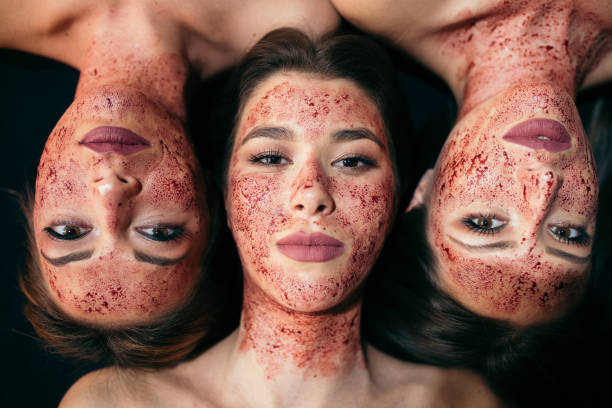The choice between microneedling and a facial depends on your skin goals and needs. Here’s a comparison to help you decide:
Microneedling
Benefits:
- Collagen Production: Stimulates collagen and elastin production, improving skin texture and firmness.
- Scar Reduction: Effective for reducing acne scars, surgical scars, and stretch marks.
- Anti-Aging: Minimizes fine lines and wrinkles.
- Pigmentation: Helps to even out skin tone and reduce hyperpigmentation.
- Absorption: Enhances the absorption of skincare products.
Considerations:
- Downtime: May require a few days of recovery due to redness and sensitivity.
- Procedure: Involves tiny needles creating micro-injuries in the skin, which might be uncomfortable.
- Frequency: Typically done every 4-6 weeks for optimal results.
Facial
Benefits:
- Relaxation: Provides a relaxing and pampering experience.
- Hydration: Hydrates and nourishes the skin.
- Immediate Glow: Offers an instant glow and refreshed appearance.
- Variety: Includes various types like anti-aging, brightening, or acne-clearing facials tailored to specific skin concerns.
Considerations:
- Temporary Results: Effects may be short-term compared to the longer-term benefits of microneedling.
- Mild Impact: Less intensive than microneedling, so it might not address deeper skin issues.
Which is Better for You?
- For Anti-Aging and Scarring: Microneedling is generally more effective.
- For Relaxation and Immediate Glow: A facial might be more suitable.
- For Long-Term Skin Health: Microneedling offers longer-lasting benefits.
- For Regular Maintenance: Facials can be part of a regular skincare routine.
Conclusion
Both treatments have their unique benefits. If you are looking for long-term improvements in skin texture, scars, and aging signs, microneedling might be the better option. If you want a relaxing experience with immediate but temporary results, a facial would be ideal. It’s also possible to combine both treatments for comprehensive skincare. Consulting with a skincare professional can help tailor the treatments to your specific needs.

What is the downside of microneedling?
Microneedling offers many benefits, but there are also potential downsides to consider:
Potential Downsides of Microneedling
- Pain and Discomfort:
- The procedure involves the use of tiny needles, which can cause discomfort or pain. Numbing cream is often used, but some sensitivity might still be felt.
- Downtime:
- Post-treatment, the skin may appear red and feel tender, similar to a sunburn, for a few days. Peeling, swelling, and minor bruising can also occur.
- Infection Risk:
- Since microneedling creates micro-injuries in the skin, there is a risk of infection if the procedure is not done in a sterile environment or if proper aftercare is not followed.
- Skin Irritation:
- Some individuals may experience irritation, dryness, or flaking as the skin heals.
- Hyperpigmentation:
- In rare cases, microneedling can cause hyperpigmentation, especially in individuals with darker skin tones or those prone to pigmentation issues.
- Herpes Simplex Reactivation:
- For individuals with a history of herpes simplex (cold sores), microneedling can trigger a flare-up.
- Not Suitable for All Skin Conditions:
- Microneedling is not recommended for individuals with certain skin conditions like active acne, eczema, psoriasis, or rosacea, as it can exacerbate these conditions.
- Multiple Sessions Needed:
- Significant results often require multiple sessions, which can be time-consuming and costly.
- Professional Expertise Required:
- For safety and effectiveness, microneedling should be performed by a trained and experienced professional. DIY or at-home microneedling devices may pose higher risks of complications.
Conclusion
While microneedling can provide significant skin benefits, it’s essential to weigh these against the potential downsides. Consulting with a qualified skincare professional can help determine if microneedling is suitable for your skin type and concerns, and ensure the procedure is performed safely.
